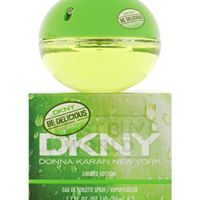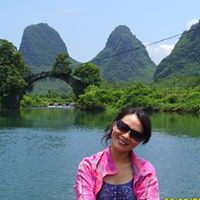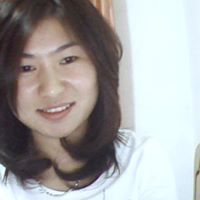Ling Zhang
age ~58
from Frisco, TX
Ling Zhang Phones & Addresses
- Frisco, TX
- Mc Kinney, TX
- Aubrey, TX
- Alhambra, CA
- Monterey Park, CA
- Encino, CA
- 304 Palmetto Dr APT D, Alhambra, CA 91801 • (626)2813721
Isbn (Books And Publications)

Medicine Doctors

Dr. Ling Zhang, Dallas TX - MD (Doctor of Medicine)
view sourceSpecialties:
Physical Medicine & Rehabilitation
Address:
8215 Westchester Dr Suite 221, Dallas, TX 75225
(214)3612772 (Phone), (214)3619968 (Fax)
(214)3612772 (Phone), (214)3619968 (Fax)
Certifications:
Physical Medicine & Rehabilitation
Awards:
Healthgrades Honor Roll
Languages:
English
Hospitals:
8215 Westchester Dr Suite 221, Dallas, TX 75225
Medical Center of Arlington
3301 Matlock Road, Arlington, TX 76015
Medical Center of Arlington
3301 Matlock Road, Arlington, TX 76015
Education:
Medical School
Tongji Med University
Medical School
St Barnabas Med Center
Graduated: 2007
Medical School
University Of Texas Southwestern Med School
Graduated: 2010
Tongji Med University
Medical School
St Barnabas Med Center
Graduated: 2007
Medical School
University Of Texas Southwestern Med School
Graduated: 2010

Ling Zhang
view sourceSpecialties:
Clinical Pathology
Work:
Moffitt Medical GroupMoffitt Cancer Center Pathology
12902 Usf Magnolia Dr, Tampa, FL 33612
(813)7453001 (phone), (813)7458479 (fax)
12902 Usf Magnolia Dr, Tampa, FL 33612
(813)7453001 (phone), (813)7458479 (fax)
Education:
Medical School
Fujian Med Coll, Fuzhou City, Fujian, China
Graduated: 1982
Fujian Med Coll, Fuzhou City, Fujian, China
Graduated: 1982
Languages:
English
Description:
Dr. Zhang graduated from the Fujian Med Coll, Fuzhou City, Fujian, China in 1982. She works in Tampa, FL and specializes in Clinical Pathology.

Ling Zhang
view sourceSpecialties:
Physical Medicine & Rehabilitation
Work:
Health South Rehabilitation Hospital
7930 Northaven Rd, Dallas, TX 75230
(214)7068200 (phone), (214)7068380 (fax)
Star Health & Rehab PA
6715 Pemberton Dr, Dallas, TX 75230
(214)8087704 (phone), (214)9871475 (fax)
7930 Northaven Rd, Dallas, TX 75230
(214)7068200 (phone), (214)7068380 (fax)
Star Health & Rehab PA
6715 Pemberton Dr, Dallas, TX 75230
(214)8087704 (phone), (214)9871475 (fax)
Education:
Medical School
Tongji Med Univ, Wuhan City, Hubei, China
Graduated: 1982
Tongji Med Univ, Wuhan City, Hubei, China
Graduated: 1982
Languages:
English
Description:
Dr. Zhang graduated from the Tongji Med Univ, Wuhan City, Hubei, China in 1982. She works in Dallas, TX and 1 other location and specializes in Physical Medicine & Rehabilitation.

Ling Zhang
view sourceSpecialties:
Pathology
Anatomic Pathology
Hematology
Anatomic Pathology
Hematology

Ling Zhang
view sourceSpecialties:
Physical Medicine & Rehabilitation
Hematology
Anatomic Pathology & Clinical Pathology
Clinical Pathology/Laboratory Medicine
Hematology
Anatomic Pathology & Clinical Pathology
Clinical Pathology/Laboratory Medicine
Education:
China Medical University (1982)

Ling Zhang
view sourceSpecialties:
Anesthesiology
Education:
Xian Medical University, Xian, Shaanxi (1982)
Name / Title
Company / Classification
Phones & Addresses
President
Shijun International Inc
Nonclassifiable Establishments
Nonclassifiable Establishments
2225 W Commonwealth Ave, Alhambra, CA 91803
Director
FIRST CHINESE CHRISTIAN CHURCH (DOC) OF TEXAS
111 W Spg Vly Rd STE 250, Richardson, TX 75081
1431 Fieldstone Dr, Allen, TX 75002
1431 Fieldstone Dr, Allen, TX 75002
Managing
Everspring Investment, LC
Real Estate Investment
Real Estate Investment
2925 Diamond Rdg Rd, Pomona, CA 91765
3641 Norwich Pl, Whittier, CA 91748
3641 Norwich Pl, Whittier, CA 91748
Director, Managing
PROSPERITY COMMERCIAL, LLC
4545 Firewheel Dr, Plano, TX 75024
6715 Pemberton Dr, Dallas, TX 75230
6715 Pemberton Dr, Dallas, TX 75230
Director, Managing
TAOZ MANAGEMENT, LLC
4545 Firewheel Dr, Plano, TX 75024
6715 Pemberton Dr, Dallas, TX 75230
6715 Pemberton Dr, Dallas, TX 75230
Medical Doctor, Owner, Physical Medicine, President, Principal
Star Health & Rehab, PA
Health/Allied Services
Health/Allied Services
1410 E Sandy Lk Rd, Coppell, TX 75019
MR PANDA USA, LTD
Ling Zhang MD
Physical Medicine
Physical Medicine
6715 Pemberton Dr, Dallas, TX 75230
(214)8087704, (972)9060154
(214)8087704, (972)9060154
Us Patents
-
Automotive Grease Gun
view source -
US Patent:20060278660, Dec 14, 2006
-
Filed:Jun 8, 2005
-
Appl. No.:11/147205
-
Inventors:Ling Zhang - Rowland Heights CA, US
-
International Classification:G01F 11/00
-
US Classification:222262000, 222333000
-
Abstract:A shoulder supported, hand directed automotive grease gun in which a reciprocating piston transfers fluid from a supply tube to an outlet conduit. A battery powered motor and gear transmission rotate a disc on which is mounted an eccentric pin. The pin forcibly moves a piston holder between low friction parallel guides so as to advance the piston with its transferred fluid toward the outlet conduit. A first spring constantly biases the piston holder toward the pin so that the piston reciprocates rapidly as the disc rotates. An adjustable spring-loaded ball seal unit with an adjustable spring seat controls flow of the fluid. A fluid supply tube heating device alters fluid density to also control fluid flow. An auxiliary shoulder strap relieves pressure on an operator's wrist and transfers backpressure and tool weight to the operators body.
-
Digital Air Compressor Control System
view source -
US Patent:20070081902, Apr 12, 2007
-
Filed:Sep 28, 2006
-
Appl. No.:11/536049
-
Inventors:Ling Zhang - Rowland Heights CA, US
Ning Zhang - Taicang City, CN -
International Classification:F04B 49/10
F04B 49/06 -
US Classification:417032000, 417044200
-
Abstract:A digital air compressor control system is for creating a customized air compressor. The system includes microprocessor, power supply, electric sensors and electric valve. In general, digital control system includes four overall components, which may be present in a variety of electric-mechanical formulations. The first component is the microprocessor. It controls the system's or component's action. It receives signals and sends out action commands according to user requirements. Microprocessor directs most every component action. The second component is power control system. Under microprocessor control, the power control system can supply or stop supplying current to electric components allowing accurate functionality. The next component is sensors. They include pressure sensors and temperature sensors. The pressure sensor picks up the pressure data from the control pressure area. The sensor sends the signal to the microprocessor for processing, and issues appropriate commands that the designer programmed or that the user preset. The temperature sensor function is similar to the pressure sensor, one difference is that the signal comes from the control temperature area. The microprocessor receives these signals and sends commands to control power on or off; motor run or stop; valve open or close. Another component is the electric valve. These valves follow the microprocessor command to either open or close to allow the air tank to reach preset pressure. It also releases tube pressure air from the pump to tank.
Resumes

Ling Zhang New York, NY
view sourceWork:
Golden Touch Imports
Manhattan, NY
Oct 2011 to Feb 2014
Assistant Designer Necessary Objects
Long Island City, NY
May 2011 to Oct 2011
Assistant Designer Freelance, varied locations
Apr 2010 to May 2011 The Original Inc
Los Angeles, CA
May 2010 to Aug 2010
Assistant Designer V-fish Designs
Chicago, IL
Aug 2009 to Mar 2010
Design Intern
Manhattan, NY
Oct 2011 to Feb 2014
Assistant Designer Necessary Objects
Long Island City, NY
May 2011 to Oct 2011
Assistant Designer Freelance, varied locations
Apr 2010 to May 2011 The Original Inc
Los Angeles, CA
May 2010 to Aug 2010
Assistant Designer V-fish Designs
Chicago, IL
Aug 2009 to Mar 2010
Design Intern
Education:
The Illinois Institute of Art
Chicago, IL
Mar 2010
Bachelor of Fine Arts in Fashion Design
Chicago, IL
Mar 2010
Bachelor of Fine Arts in Fashion Design
Lawyers & Attorneys

Ling Jia Zhang - Lawyer
view sourceLicenses:
New York - Delinquent 2007
Education:
St. Louis University School of Law
Specialties:
Advertising - 34%
Corporate / Incorporation - 33%
Communications / Media - 33%
Corporate / Incorporation - 33%
Communications / Media - 33%

Ling Zhang - Lawyer
view sourceSpecialties:
Advertising
Corporate / Incorporation
Communications / Media
Communications / Media
Advertising
Corporate / Incorporation
Communications / Media
Communications / Media
Advertising
ISLN:
924295712
Admitted:
2007
Plaxo

zhang Ling
view source
Zhang Ling
view source中国

Ling Ling Zhang
view source
Ling Zhang
view source
Xiao Ling Zhang
view source
Michelle Xin Ling Zhang
view source
Ling Hang Zhang
view source
Ling Ling Zhang
view source
Ling Ling Zhang
view source
Chia Ling Zhang
view sourceYoutube
Classmates

cal- state university los...
view sourceGraduates:
Raj Chaugule (1991-1995),
Elizabeth MacLean (1971-1975),
Nadia Mehdi (1992-1996),
Monir Hosseiniyar (1982-1986),
Yan Ling Zhang (2000-2004)
Elizabeth MacLean (1971-1975),
Nadia Mehdi (1992-1996),
Monir Hosseiniyar (1982-1986),
Yan Ling Zhang (2000-2004)
News

Fat Beneath Skin May Ward Off Infections
view source- Ling Zhang, the first author of the paper, exposed mice to S. aureus and within hours detected a major increase in both the number and size of fat cells at the site of infection. More importantly, these fat cells produced high levels of an antimicrobial peptide (AMP) called cathelicidin antimicrobia
- Date: Jan 02, 2015
- Category: Health
- Source: Google

Fat can help keep your skin 'infection free'
view source- aureus in the fat layer of the skin, so researchers looked to see if the subcutaneous fat played a role in preventing skin infections.Ling Zhang, PhD, the first author of the paper, exposed mice to S. aureus and within hours detected a major increase in both the number and size of fat cells at the
- Date: Jan 02, 2015
- Category: Health
- Source: Google
Myspace
Flickr
Googleplus

Ling Zhang
Work:
Beijing
Education:
Malardalen

Ling Zhang
Work:
Bertelsmann - UI
Education:
Hubei academy of fine art - Design
Tagline:
你+,我+,他+google+

Ling Zhang
Education:
The One Academy - Design

Ling Zhang
Work:
Enbridge

Ling Zhang

Ling Zhang
About:
寧波に外国向けの文具...

Ling Zhang

Ling Zhang
Get Report for Ling Zhang from Frisco, TX, age ~58















